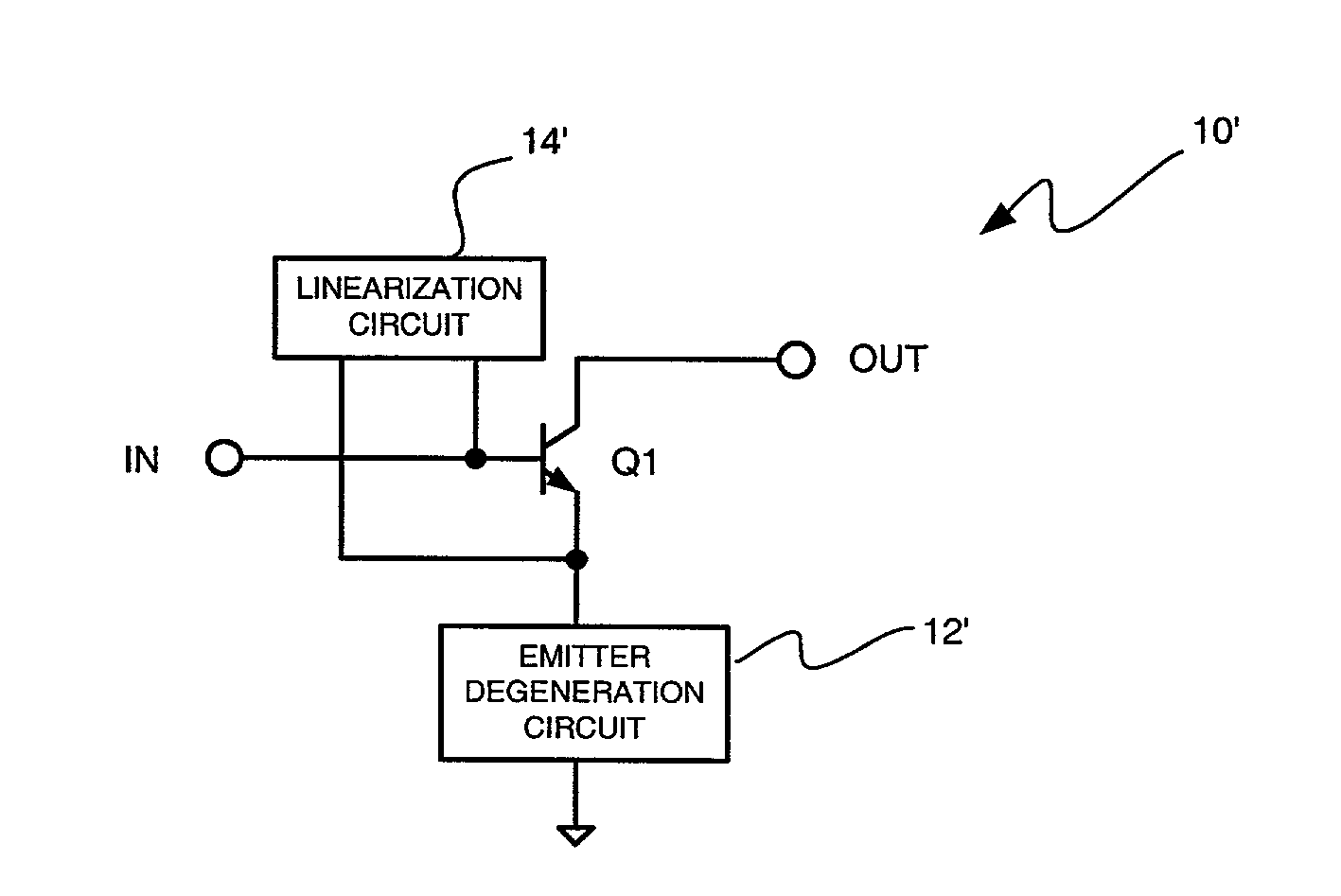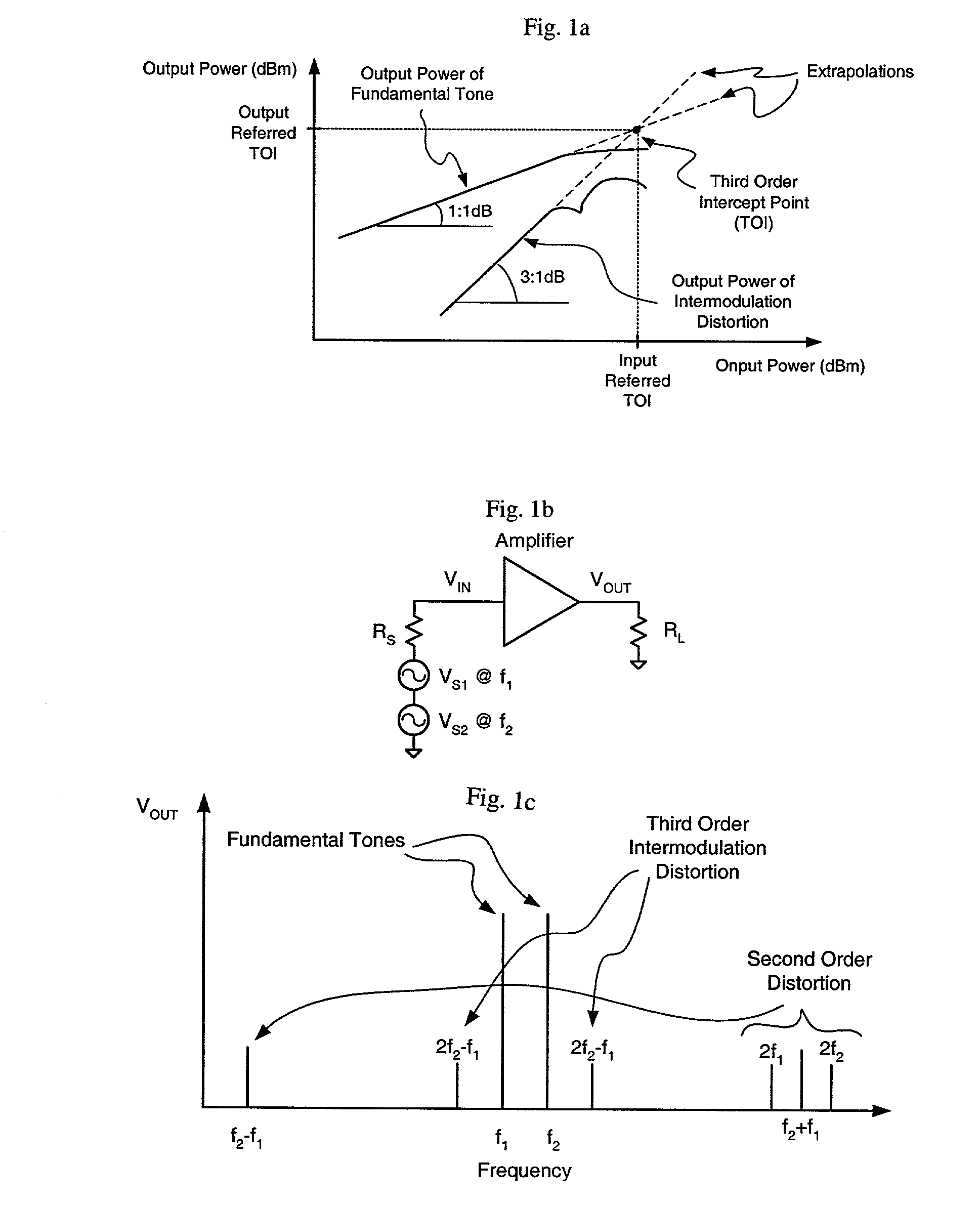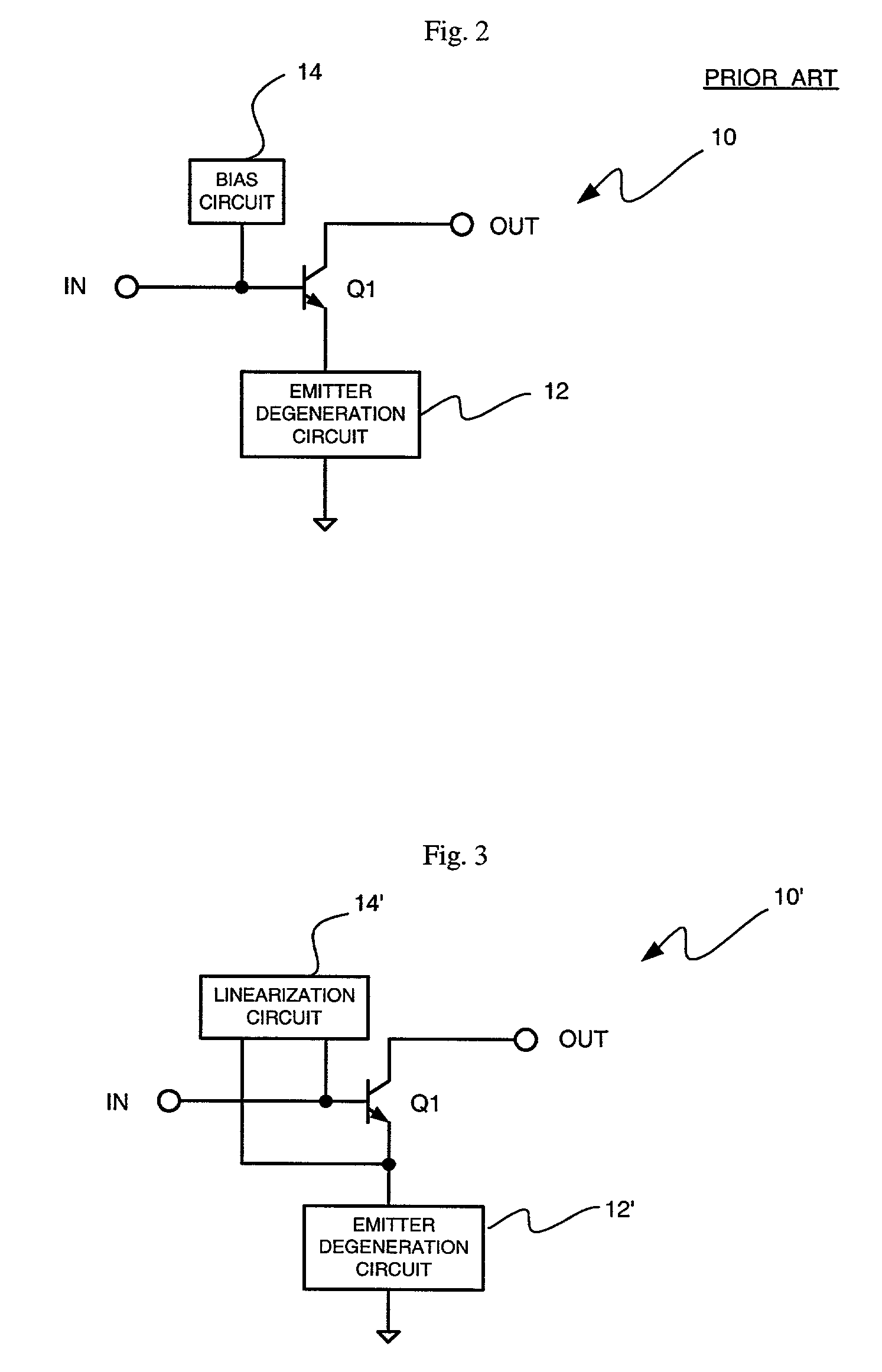Circuit for linearizing electronic devices
a technology of linearizing electronic devices and circuits, applied in amplifier modifications to reduce non-linear distortion, gain control, high frequency amplifiers, etc., can solve the problems of reducing the sensitivity of receivers, and affecting the quality of desired signals
- Summary
- Abstract
- Description
- Claims
- Application Information
AI Technical Summary
Problems solved by technology
Method used
Image
Examples
Embodiment Construction
[0024] Illustrative embodiments and exemplary applications will now be described with reference to the accompanying drawings to disclose the advantageous teachings of the present invention.
[0025] The level of the third-order intermodulation (IM3) distortion product generated by a nonlinear circuit at small input power levels is usually estimated from a third-order intercept point (TOIP) measured with a two-tone input signal. This is illustrated in FIGS. 1a and 1b.
[0026] FIG. 1a is a graph of output power verses input power for a typical RF amplifier showing the third order intercept point between the extrapolated output power associated with fundamental tones and the extrapolated output power associated with intermodulation distortion resulting therefrom. When the two fundamental tones (f.sub.1 and f.sub.2) representing two interferers are applied to a transistor, its nonlinear characteristics generate spurious responses in the output voltage. This is depicted in FIG. 1b.
[0027] FIG....
PUM
 Login to View More
Login to View More Abstract
Description
Claims
Application Information
 Login to View More
Login to View More - R&D
- Intellectual Property
- Life Sciences
- Materials
- Tech Scout
- Unparalleled Data Quality
- Higher Quality Content
- 60% Fewer Hallucinations
Browse by: Latest US Patents, China's latest patents, Technical Efficacy Thesaurus, Application Domain, Technology Topic, Popular Technical Reports.
© 2025 PatSnap. All rights reserved.Legal|Privacy policy|Modern Slavery Act Transparency Statement|Sitemap|About US| Contact US: help@patsnap.com



